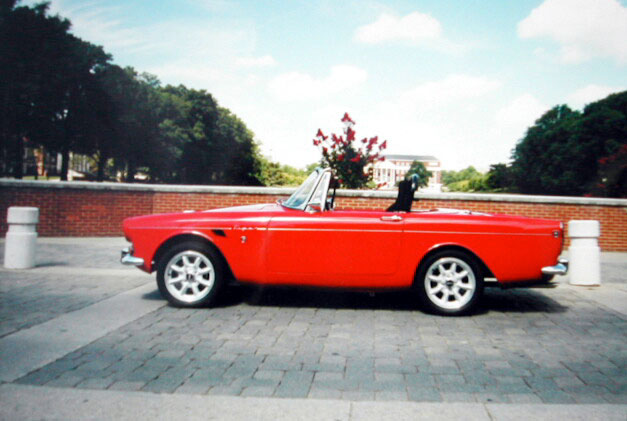Performance Tuning Front End Alignment

An Article by Larry Paulick
March, 2001
Page 3
Introduction:
This is how you do it!
Get various thickness single shims from a body shop or good auto parts store. Use alignment shims, not body shims, as the alignment shims have a tab with a hole in it to grab, as opposed to the body shim, without the tab. Much easier to work with when adding or subtracting shims.
Put a jack under the front a arm, jack up the car, take off the wheel, and use a 5/8" socket with extension to loosen the 2 upper a arm bolts. Now jack the car up further, so that you take the tension of the spring off of the upper a arms
You may need a pry bar, screw driver or something to break or loosen the a arm for the crossmember tower that it bolts onto. If everything is clean and new, HA, you may be able to move it apart by hand. What you want is to get enough space to add or subtract shims.
If you need to get more pos caster, add a single shim to the rear bolt, and tighten both bolts to spec, ie 52 ft-lbs. Put the tire on, lower the jack, bounce the car again, and check the new caster.
Sounds like a lot, but not that bad, and after adding the first shim and checking the caster, you will get the hang of it.
Set the caster for both sides.
4. Setting the camber is next. The procedure is similar to setting the caster on the upper a arms, but you will be using a double shim, that goes behind both bolts, and not a single shim. Use the same general procedure as above for caster.
Now check your camber. Then check you caster again, and it may have changed with the camber.
Remember, you set the caster first, then camber, then check both, and if the caster is off, change it first, then go to the camber. It may take several tries on the first attempt, but after you get it right, changing it to a different setting later is very easy, as you have now set up a base line to work from.
Again drive the car for a short distance, and check the caster and camber in that order. If it is still good, then you move onto toe.
5. Toe does not effect caster/camber, and is adjusted by the adjusters on the end of the R&P and tie rods.
The first thing you want to do is to make sure that your steering is centered. To do this, with the car jacked up, turn your steering wheel to the left and right, mark each, and then cut in half to find the true center of the R&P travel. Mark this, and if necessary, take off your steering wheel and realign it to be in the true center of the R&P travel.
Next, using a straight edge make sure your front tires are pointing straight ahead. You can use electrical conduit as a long straight edge, again Home Depo, and carpenters squares, but while there are several ways, you want to get the tires point straight ahead.
You may find that that with the tires straight ahead, the steering wheel, that is now in the true center, is not centered. No problem. You adjust the toe in adjustment to get the wheels pointing straight ahead first. If the car has pos. or neg. toe, don't worry, because you want to get everything pointing straight first.
The next and final step is now easy. Jack up the front, so that the tire are just off the ground, and spin the tires, and using a nail or sharp point, put a mark on the tire. Adjust the adjustment screws on the left and right tie rod ends, to get your toe, measuring the front and back of the tire at the same height off the ground, on the scribed mark to get your toe.
You are now finished, and Congratulations, and
Start Your Engines!.
Larry
 **
**
